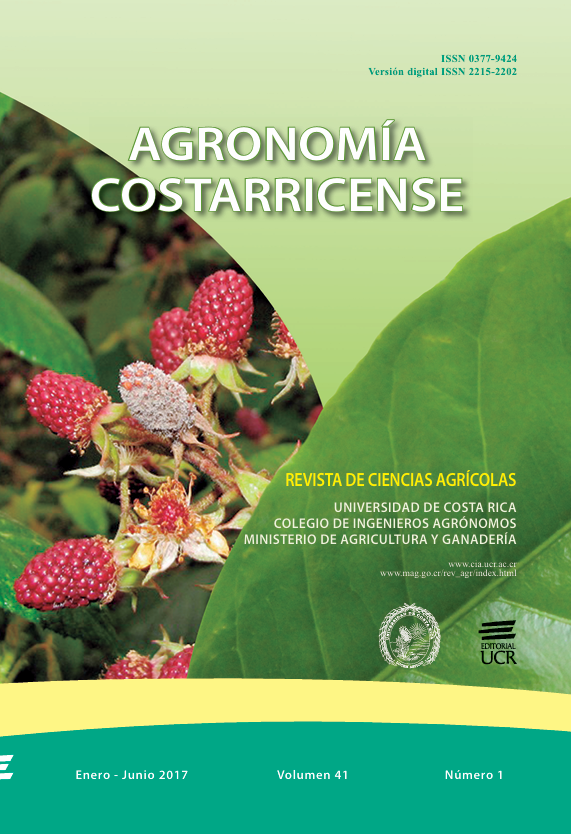Abstract
Calcium is a limiting nutrient in coffee groves under intensive fertilizer management on Ultisols. Intensively managed coffee (Coffea arabica) agroecosystems demand considerable amounts of potassium (K) and nitrogen (N). In groves fertilized with high rates of N, K and P, however, it is reasonable to foresee that calcium (Ca) or magnesium (Mg) availability can limit crop production and development. This study explored whether a link exists between coffee plant leaf tissue Ca, Mg and K contents and the fertility of these exchangeable bases in Ultisols. The study also analyzed whether the availability of one of these nutrients in leaves limits crop productivity. In the span of 2 years, soil and leaf tissue samples were collected in 26 coffee farms in Tarrazú, Costa Rica. Using linear regression analysis models, soil and leaf Ca, Mg and K concentrations were compared; the el suelo. Adicionalmente, se caracterizaron el estatus nutricional del follaje, la estructura y la producción de las plantas de café en 2 parcelas en cada uno de 39 lotes (12 plantas por parcela; 78 parcelas). Mediante indicadores de productividad, se clasificó post-hoc cada par de parcelas en una collected in 2 plots in each of 39 coffee farms (12 plants per plot; 78 plots total). Within each farm, the crop productivity indicator was used to classify each plot as of higher or lower productivity in relation to its pair. By this post-hoc classification, a quasi-experiment with a random block design was generated. This design was used to analyze the variation of N, K, Ca and Mg concentration of the leaf tissue collected in the plots. Ca leaf content tended to be higher in leaf samples from plots with higher productivity; Ca/K and Ca/N ratios tended to be significantly higher as well (p-value<0.05). These results highlight the importance of soil Ca for coffee productivity in Ultisols of moderate to low fertility.
Comments

This work is licensed under a Creative Commons Attribution-NonCommercial-NoDerivatives 4.0 International License.
Copyright (c) 2017 Agronomía Costarricense


